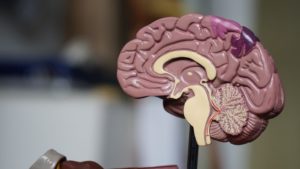Most people experience headaches and migraines occasionally, but for some, they become so frequent that they disrupt their daily lives. Headaches and migraines have symptoms that overlap, but they are not the same condition. Here’s how to tell which you are suffering from, what might be causing your pain, and how to alleviate it:
Headaches Vs. Migraines: What’s the Difference?
A headache is just what it sounds like. Your head hurts. The pain may be isolated to one part of your head, like your forehead or the back of your head and neck, but headache pain usually occurs on both sides of the head. That’s one of the differences between headaches and migraines. Migraine pain is more commonly isolated to one area. Garden variety headaches can range in severity from mild to excruciating and can last anywhere from a few hours to a week.
If you experience a sudden, intense headache, this may be a sign of a serious medical condition such as an aneurysm or stroke, and you should go to your local emergency room.
Headaches that are not caused by a serious problem tend to come on more slowly, with the pain intensifying over 30 min to an hour. Severe headache pain may cause nausea or fatigue, but these symptoms don’t occur before a regular headache begins. Migraines are associated with symptoms called “aura” that occur before the pain begins. These include:
- Having trouble thinking
- Vision abnormalities such as flashing lines or lights
- Tingling or numbness in the face or hands
- Unusual sense of smell, touch, or taste
Once migraine pain does start, it usually has a throbbing quality that differs from a regular headache. Migraines typically cause these other unique symptoms:
- Nausea
- Pain behind one eye or ear
- Pain in the temples
- Seeing spots or flashing lights
- Sensitivity to light or sound
- Temporary vision loss
- Vomiting
The level of pain experienced with migraines is usually moderate to severe rather than mild. If your headaches do not include any of these other symptoms, you are most likely not suffering from a migraine. Even non-migraine headaches can be miserable, especially if severe or long-lasting.
What Causes Headaches?
A variety of factors can cause regular headaches. Headache pain that occurs mainly in the forehead can be a sign of sinus congestion due to allergies or viral or bacterial infection. Pain that mainly affects the back of the head, neck, or shoulders could be a “tension headache,” so-called because it is often the result of tight muscles in the upper back and neck, caused by stress. Other common triggers for headaches include certain foods, like red wine or processed meats that contain nitrates, lack of sleep, skipped meals, and poor posture. Anxiety and panic disorders can also make someone more prone to headaches. Some people may be more genetically predisposed to headaches than others.
Lifestyle factors like sitting hunched over a computer or smartphone for long periods can cause headaches. This is because tilting the head downward puts pressure on the spine and surrounding tissue, straining muscles and causing headache, fatigue, and muscle pain.
How to Treat and Prevent Headaches
Controllable lifestyle factors often bring on headaches. Improving your posture, coping better with stress, and avoiding trigger foods may help reduce the number of headaches you experience. Tension headaches are often more persistent than other kinds and are often triggered by both postural problems and stress. In addition to improving your posture, you may need to see a chiropractor to help fix the damage that poor posture has caused. Your chiropractor can adjust your neck and back over several sessions to realign the vertebrae in your neck and back. He can also show you exercises and stretches that you can do at home to relax your muscles and ease symptoms.Working on anxiety-reducing techniques such as meditation can also help to relax your shoulders and neck muscles, reducing pain.
For immediate relief of headache pain, you can try over the counter pain relievers or topical treatments. These can help you feel better but will not fix the underlying cause of chronic headaches.
What Causes Migraines?
The causes of migraines are not completely understood. It’s thought that genetic factors that affect how the brain stem interacts with the trigeminal nerve may be involved. Neurotransmitters like serotonin may also play a role. Many environmental factors can trigger migraines for those who are prone. Hormonal changes, including menstruation, menopause, and contraceptives, can cause migraines for some women. Certain foods and drinks can also trigger migraines. Common problem foods include alcohol, caffeine, high histamine foods (like cheeses or sausage), very salty foods, artificial sweeteners, and the preservative monosodium glutamate (MSG).
Certain people are very sensitive to sensory stimuli and can have migraines brought on by bright lights or intense smells. Even the weather can cause migraines in some people due to changes in barometric pressure. Understanding your triggers is the first step to having fewer migraines.

How to Treat and Prevent Migraines
Avoiding trigger foods and practicing relaxation techniques can help prevent migraines for some people. Women may benefit from addressing hormonal imbalances or trying different birth control methods.
The root cause of migraines is neurological. Chiropractic care can help with frequent migraines by realigning the vertebrae that house your spinal cord. This helps to relieve pressure on nerves and improve neurological functioning. Massage and acupuncture may also help by increasing endorphins, your body’s natural pain-fighting chemicals.
Over the counter drugs such as anti-nausea medicine and NSAID pain relievers can help with the acute symptoms of migraines. Some patients find that hot compresses on the face or a cold pack on the back of the neck can also help relieve symptoms. Studies have shown that the herb feverfew can help prevent or stop migraines when taken at 100-300 mg up to four times a day. (Ask your doctor before trying any new medicine or herb).
If you are struggling with frequent migraines, talk to your chiropractor about a treatment regimen to help with your unique situation.









